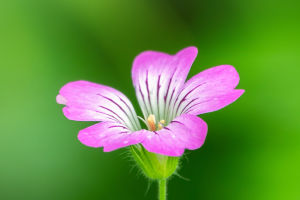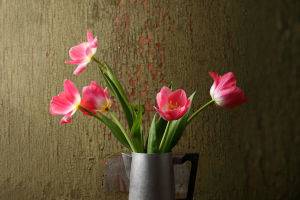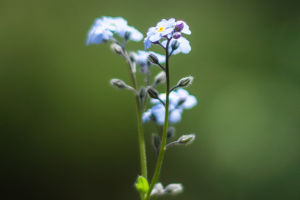Dear Lykkers! Tulips, with their vibrant colors and sleek, cup-shaped blooms, are one of the world's most beloved flowers.
Originating from Central Asia, these stunning blooms have traveled across the globe, finding a special place in gardens, floral arrangements, and hearts worldwide.
Tulips symbolize a range of emotions and occasions, from love and admiration to renewal and celebration.
A Brief History of Tulips
1. Origins and Early Cultivation
Tulips are native to the mountainous regions of Central Asia, particularly in the areas now known as Kazakhstan, Uzbekistan, and Persia. These flowers were first cultivated by the Turks in the Ottoman Empire, who admired their beauty and incorporated them into art, gardens, and culture. The word "tulip" is derived from the Persian word for "turban," possibly due to the flower's shape resembling the headwear.
2. Tulip Mania in the Netherlands
In the 17th century, tulips found their way to the Netherlands, where they became highly coveted. The Dutch embraced these vibrant flowers with fervor, leading to the infamous "Tulip Mania" of the 1630s. During this period, tulips became a symbol of wealth and status, with some rare varieties selling for exorbitant prices. While the tulip market eventually crashed, the Netherlands remained the epicenter of tulip cultivation and trade, a position it holds to this day.
Varieties of Tulips
Tulips come in a staggering array of colors, shapes, and sizes, making them incredibly versatile and appealing to any gardener or flower enthusiast.
1. Single Early Tulips
These are among the earliest blooming tulips, known for their simple, cup-shaped flowers and sturdy stems. They are ideal for borders, rock gardens, and containers, and come in a variety of colors, from soft pastels to bright, bold hues.
2. Double Tulips
Also known as "peony tulips" due to their multiple layers of petals, double tulips have a lush, full appearance. They come in both early and late varieties and are perfect for adding a touch of romance and drama to any garden.
3. Parrot Tulips
Named for their ruffled, feather-like petals that resemble a parrot's plumage, these tulips are incredibly eye-catching. Parrot tulips come in a spectrum of colors, often with streaks or flares, making them a favorite for floral arrangements.
4. Darwin Hybrid Tulips
These are some of the tallest and most robust tulips, known for their large, oval blooms and long-lasting flowers. Darwin hybrids are often used in landscaping due to their ability to withstand various weather conditions.
5. Lily-Flowered Tulips
With pointed petals that curve outwards like a lily, these tulips have a graceful, delicate appearance. They are perfect for adding elegance and height to a garden bed or bouquet.
How to Care for Tulips
1. Planting Tulips
To enjoy a springtime bloom, plant tulip bulbs in the fall, ideally 6-8 weeks before the ground freezes. Choose a well-drained location with full or partial sun, and plant the bulbs 6-8 inches deep, with the pointed end facing up. Space them 4-6 inches apart for a full, vibrant display.
2. Watering and Fertilizing
Tulips do not require frequent watering; overwatering can cause the bulbs to rot. Water them lightly after planting and during dry spells in the growing season. Fertilize the bulbs when planting and again when they first emerge in the spring with a balanced, slow-release fertilizer.
3. Protecting Tulips from Pests
Tulips can attract pests like squirrels, rabbits, and deer. To protect them, consider using deterrents like fencing, netting, or natural repellents. Planting tulips alongside companion plants like daffodils, which pests tend to avoid, can also be effective.
4. Cutting and Storing Tulips
For cut flowers, harvest tulips when the buds are still closed but show color. Trim the stems at an angle and place them in a vase with fresh water. To keep them fresh longer, change the water regularly and keep them out of direct sunlight and heat.
Creative Ways to Use Tulips in Decor
1. Tulip Bouquets and Arrangements
Tulips are a favorite for bouquets and floral arrangements due to their wide range of colors and shapes. Create a monochromatic arrangement for a classic look, or mix different varieties and colors for a more eclectic, modern design.
2. Tulip Centerpieces
Use tulips as a centerpiece for your dining table or special event. For a minimalist look, place a single variety in a simple glass vase. For a more elaborate design, combine tulips with other seasonal flowers and greenery.
3. Potted Tulips
Plant tulips in pots or containers to add a splash of color to your patio, balcony, or garden. Choose compact varieties, like dwarf tulips, for smaller spaces, and mix different colors for a dynamic display.
Tulips are much more than just beautiful flowers—they are symbols of love, renewal, and elegance, with a rich history and endless variety. Whether you're planting them in your garden, using them in floral arrangements, or simply admiring their beauty, tulips have a way of bringing joy and color into our lives. So, go ahead and embrace the timeless charm of tulips to brighten up your space!


